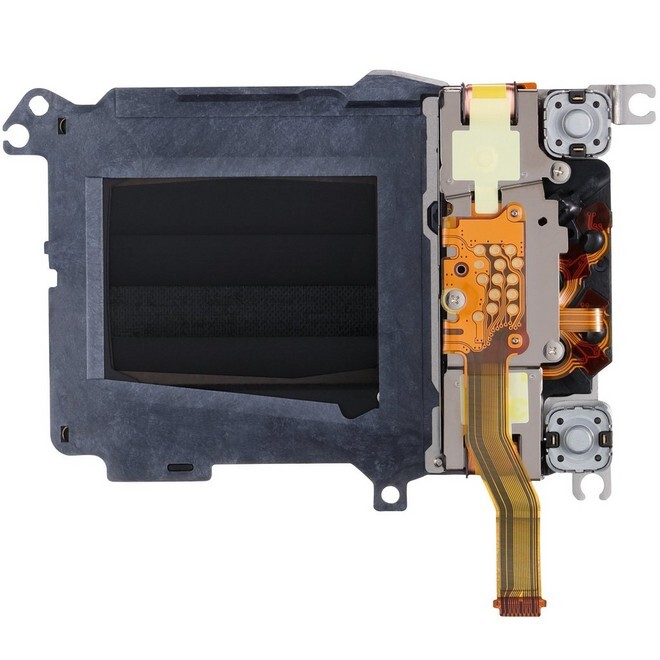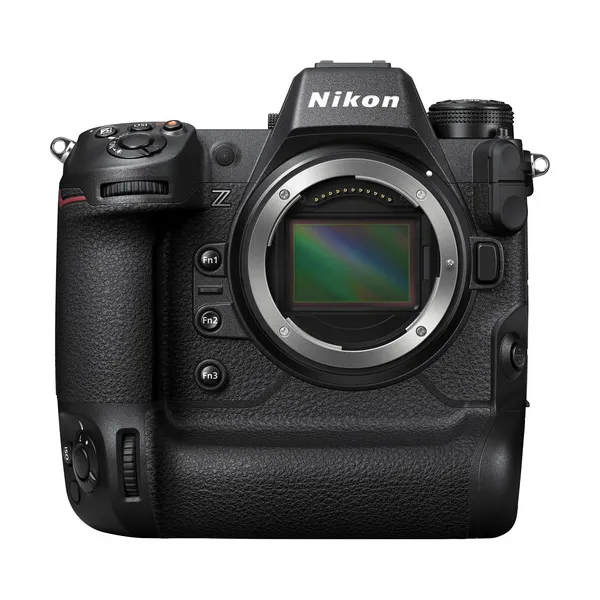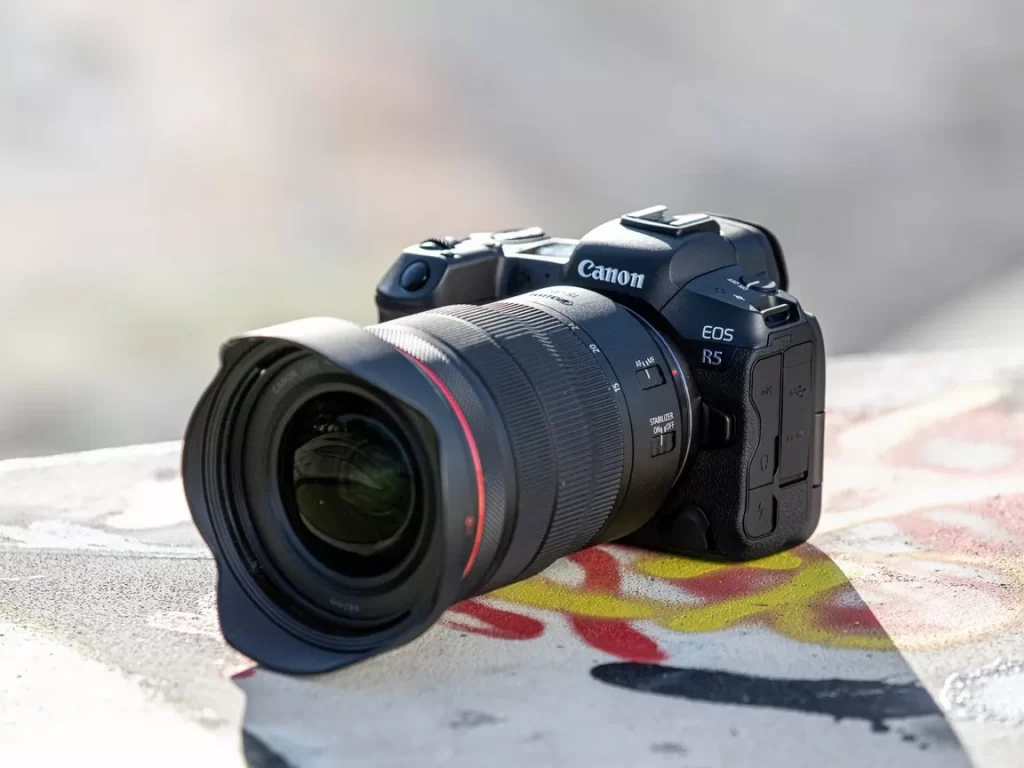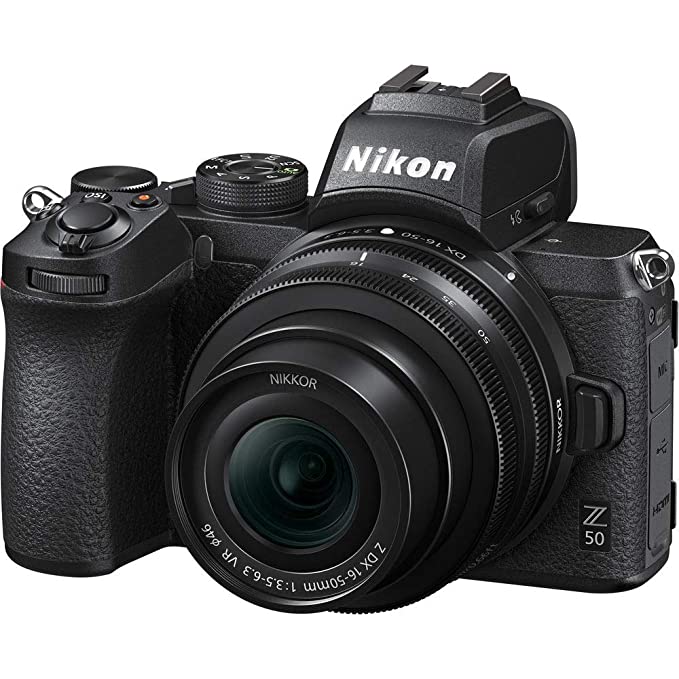Electronic shutters and mechanical shutters are two different types of shutters used in cameras to control the amount of time the camera sensor is exposed to light.
Mechanical shutter

It uses a physical mechanism to open and close a shutter in front of the camera sensor. It allows the light to pass through and expose the sensor. This process creates a distinct sound and can limit the maximum shutter speed of the camera. The physical movement of the shutter is responsible for the sound. Mechanical shutters are often used in traditional DSLR cameras.
Electronic shutter
It uses a digital signal to control the camera sensor’s exposure time. Instead of a physical shutter, the sensor is electronically turned on and off to control the amount of light that enters the camera. This process is completely silent and can offer faster shutter speeds, since there is no physical movement involved. However, electronic shutters can sometimes cause rolling shutter distortion when shooting fast-moving subjects. It may not be able to capture as much dynamic range as mechanical shutters.

Some cameras also offer a combination of both electronic and mechanical shutters. It allows the photographers to choose the best option for their shooting needs. In general, mechanical shutters are preferred for still photography, especially when shooting in bright sunlight, while electronic shutters are favored for silent shooting, high-speed photography, and video.
Types of cameras for electronic shutter
Electronic shutters are typically found in mirrorless cameras, which have an electronic viewfinder or LCD screen to display the image, rather than a traditional optical viewfinder. One of the main advantage of electronic shutter is that they are completely silent. It can be useful in situations where a photographer wants to capture images discreetly, such as in a wedding ceremony or during a wildlife shoot.

Another advantage of electronic shutters is that they can offer faster shutter speeds than mechanical shutters. This is because the electronic signal can be turned on and off much faster than a physical shutter can open and close. This can be useful in situations where a photographer wants to freeze fast-moving action, such as in sports or wildlife photography.
Improvement areas of electronic shutter
There are some downsides to using an electronic shutter. Rolling shutter distortion is one potential issue. It can occur when the sensor reads out line by line instead of all at once. This can result in distorted images when photographing fast-moving subjects, such as a propeller on an airplane or a speeding car. Additionally, electronic shutters may not be able to capture as much dynamic range as mechanical shutters, which can lead to a loss of detail in highlights and shadows.

Which shutter mechanism is better?
Both mechanical and electronic shutters have their own advantages and disadvantages. Which one is better, depends on the specific shooting situation and the photographer’s preferences. People generally prefer mechanical shutters for still photography. This is particularly true when shooting in bright sunlight or using flash. It produces less noise and less rolling shutter distortion. They are also better at handling high dynamic range scenes with deep shadows and bright highlights.
People often favor electronic shutters for silent shooting. They are also good for high-speed photography and video. Electronic shutters are completely silent and can offer faster shutter speeds, which can be useful when photographing fast-moving subjects. They also eliminate any potential vibration caused by the mechanical movement of the shutter, which can result in sharper images.

In some cameras, a combination of both electronic and mechanical shutters is available. This can allow photographers to choose the best shutter type for the specific shooting situation. For example, some cameras allow for electronic shutter usage in situations where there is little or no motion, but switch to a mechanical shutter when there is fast motion present.
Electronic shutter and viewfinder in camera
In a camera that uses an electronic shutter, you can manage the electronic shutters through the viewfinder or LCD screen. In fact, because electronic shutters are silent and don’t produce any vibration, they can be particularly useful when using the viewfinder for shooting. The camera sensor directly displays the image on the viewfinder or LCD screen in real-time when shooting with an electronic shutter. This can help photographers better visualize and frame the shot.
Some cameras automatically activate the electronic shutter when using the viewfinder or LCD screen. In other cameras, the photographer must manually select the electronic shutter mode. Some cameras also offer the option to use a hybrid shutter, which combines both electronic and mechanical shutters to take advantage of the benefits of both types of shutters.

It’s worth noting that in certain shooting scenarios, electronic shutters may not be ideal. For example, when photographing fast-moving subjects, electronic shutters can cause a rolling shutter effect, which can result in distorted images. Additionally, electronic shutters may not be able to capture as much dynamic range as mechanical shutters, which can lead to a loss of detail in highlights and shadows.
Mirrorless camera
There are many good mirrorless cameras available on the market today, each with their own unique features and advantages. Here are a few examples:
Sony Alpha a7 III: Many people widely regard this camera as one of the best mirrorless cameras on the market It features a full-frame 24.2-megapixel sensor, 693 autofocus points, 10 frames per second continuous shooting, and 4K video recording.
Fujifilm X-T4: This camera is a popular choice among photographers who value high-quality still images and video. It features a 26.1-megapixel APS-C sensor, in-body image stabilization, 20 frames per second continuous shooting, and 4K video recording.

Panasonic Lumix GH5: This camera is a favorite among videographers and content creators due to its advanced video features, including 4K 60fps recording and 10-bit internal recording. It also features a 20.3-megapixel Micro Four Thirds sensor, in-body image stabilization, and 6K photo mode.
Canon EOS R5: Canon recently released this camera for professional photographers and videographers. It features a full-frame 45-megapixel sensor, 8K video recording, and 12 frames per second continuous shooting.
Olympus OM-D E-M1 Mark III: This camera is a versatile option for photographers who value portability and durability. It features a 20.4-megapixel Micro Four Thirds sensor, in-body image stabilization, and weather-sealing. It also boasts advanced autofocus features and 60 frames per second continuous shooting in electronic shutter mode.
Mirrorless Camera – Nikon
Nikon’s flagship mirrorless camera is Z9. It features a 45.7-megapixel sensor, advanced autofocus capabilities, 8K video recording, and high-speed continuous shooting.
Nikon Z7 II is a full-frame mirrorless camera that features a 45.7-megapixel sensor, dual EXPEED 6 processors, advanced autofocus, and 4K video recording.
Another Nikon model Z6 II is a full-frame mirrorless camera that features a 24.5-megapixel sensor, dual EXPEED 6 processors, advanced autofocus, and 4K video recording.
Nikon Z50: It has APS-C sensor mirrorless camera that features a 20.9-megapixel sensor, advanced autofocus, and 4K video recording. Photographers who want the benefits of a mirrorless camera system will find it a more portable and affordable option.
Nikon’s mirrorless cameras offer a range of features and capabilities, including advanced autofocus, high-resolution sensors, and 4K or 8K video recording. Choosing the best Nikon mirrorless camera for your needs will depend on your specific shooting requirements and preferences.
Acknowledgement: Images taken from internet.

I think mechanical is better.
Thank you for the info.
Get a clear idea about the mechanical and electronic shutters. Thank you.